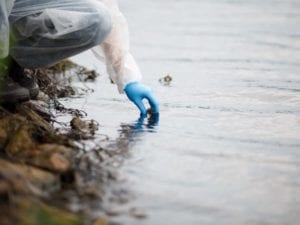Bluewater, a leader in water purification technology and solutions, called for urgent new strategies to tackle plastic pollution.
This is after a UK university study revealed that water treatment processes exacerbate break down of microplastics into nanoplastics.
The study by a team at Deakin’s Institute for Frontier Materials (IFM) in conjunction with Surrey University in the UK said that the presence of nano and microplastics in water had become a major environmental challenge posing an emerging threat to both aquatic ecosystems and human health.
“This latest study spotlights the urgent need to better understand the fate of nano/microplastics in water and its environmental and health impact,” said Bengt Rittri, the Swedish environmental entrepreneur, founder and CEO of Stockholm-based Bluewater.
Rittri said it was deeply concerning that the Surrey University research found water and wastewater treatment processes actually break microplastics down into nanoplastics, which could have potentially catastrophic consequences for the wellbeing of future generations.
Dr Ludovic Dumée, who co-led the study, noted there had been a substantial amount of work on nano and microplastics pollution but how they interact with water and wastewater treatment processes had not been fully understood.
“Our results show that water and wastewater treatment processes break microplastics down into nanoplastics,” Dr Dumée said.
“Our analysis suggests new strategies are needed to limit the number of nano and microplastics in water and wastewater to keep water quality at the required standards and reduce threats on our ecosystems.”
“The small size and high specific surface area of nano and microplastics makes them easy to ingest by living organisms where they can reach toxic levels. Their small size also makes it easy for them to travel along water and wastewater treatment processes.”








